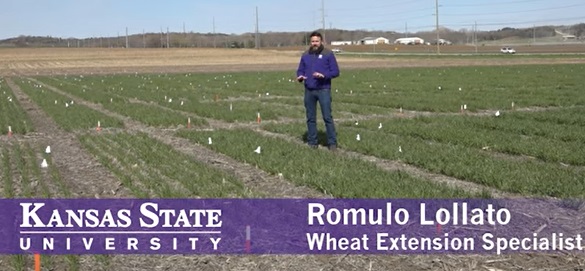Wheat specialist Romulo Lollato outlines the effects of various management strategies – including seeding rate and the application of starter fertilizer, nitrogen, sulfur, chloride and foliar fungicides – on wheat yields.
“We are replicating management practices that growers are doing in their own commercial fields,” Lollato said.
K-State’s trials include 14 research sites in Kansas during the 2022 winter wheat growing season.
Lollato said the experiments include management practices reported by low-yielding producers; average-yielding producers; top 20% yielding producers; and the top 5% yielding producers.
The management strategies are being applied in varying amounts to wheat varieties planted in Kansas.
Results so far indicate a yield bump of 13 bushels per acre from management practices implemented by low-yielding producers compared to average-yielding producers; and another 13 bushels per acres by average-yielding producers to high-yielding producers.
But, Lollato said, “there is not much yield bump between the high-yielding producers and the top 5% yielding producers.”
“We are now looking at quality attributes,” he said. “Even though we didn’t see a yield gain (from high yielding producers to the top 5% yielding producers), we are curious to see if there are positive milling and baking quality gains from the high-yielding growers to the top-yielding growers.”



